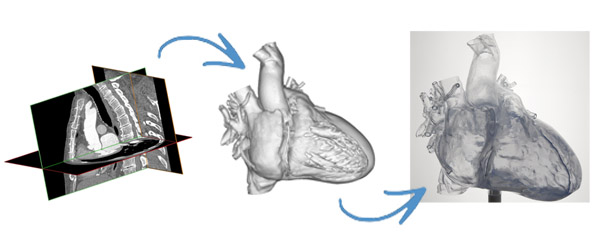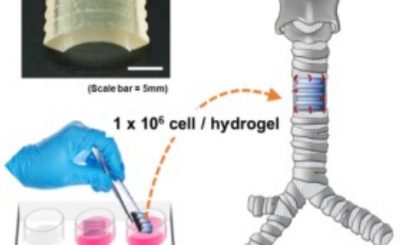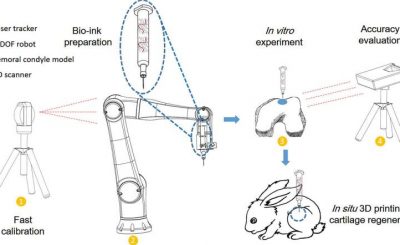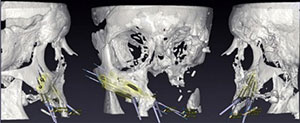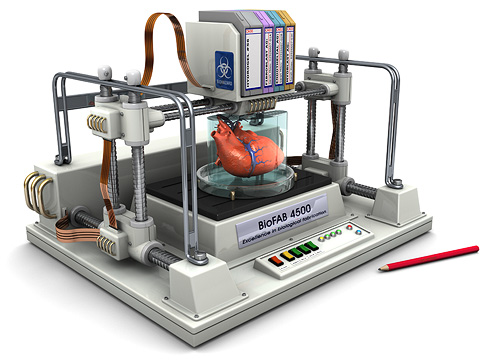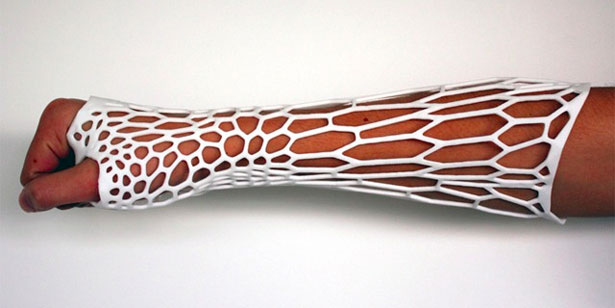From February 25-27th, REAL 2015 is bringing 3D scanning, 3D design software, augmented reality and 3D printing together under one roof. Literally, because it takes place at 
This removes the disconnect between modeling a physical object, room, building, or landscape and a CAD software that could not create models in as much detail (due to geometric limitations), and with as much accuracy as the point cloud data gathered from a laser scanner, for example.
I began to imagine that there was a switch in my mind that could just flip the way I experienced information: one mode would be physical, and the other digital. No computer screen necessary. If I were to digitize the room I am in now, I would have to digitize myself. Just like I would have to digitize myself to 3D print a “shelfie”. I was first scanned by Shapeways at the MAD museum in NYC, then at a Shapify booth to get my “shapie” at a 3D printing conference. The scanners process my reality data and 3D software prepares my digital data to be turned into new physical data as a 3D printed object.
The point I’m trying to make is that my initial fascination with 3D printing was directed towards the hardware, the materials, and the printers themselves. Reality Computing brings together all of the data and technology that makes 3D printing possible, and expands the ecosystem to definitively include sensing technologies, 3D software, and augmented reality. This has altered my perception of 3D printing. For me, 3D printing became a gateway into Reality Computing.
Over the past year, I’ve found it to be an extremely interesting concept to think about: physically transforming and transporting the world through a digital engine. A digital filter through which physical objects can be transformed and replicated, distorted, redesigned, altered in any location that has a 3D printer and the right software.
 The truly mind-blowing thing is that you’ve already read about Reality Computing. For example, when you see a story about a 3D printed heart helping doctors visualize and perform a tricky surgery on a child, you will see a headline that emphasizes the 3D printed heart. Fair enough.
The truly mind-blowing thing is that you’ve already read about Reality Computing. For example, when you see a story about a 3D printed heart helping doctors visualize and perform a tricky surgery on a child, you will see a headline that emphasizes the 3D printed heart. Fair enough.
 But, while it’s true that the 3D printed heart is what helps the surgeons prepare and teach others in a new way, at some point in the article, you will come across two other equally important processes: scanning and software. Without the “reality data” captured by a sophisticated scanner such as CT data or MRI data, as well as the software to transform that data, the real heart could not be 3D printed. Therefore, the doctor would not be able to visualize a complicated heart surgery with an exact 3D printed replica of the heart in question. This is an example of Reality Computing in the medical industry.
But, while it’s true that the 3D printed heart is what helps the surgeons prepare and teach others in a new way, at some point in the article, you will come across two other equally important processes: scanning and software. Without the “reality data” captured by a sophisticated scanner such as CT data or MRI data, as well as the software to transform that data, the real heart could not be 3D printed. Therefore, the doctor would not be able to visualize a complicated heart surgery with an exact 3D printed replica of the heart in question. This is an example of Reality Computing in the medical industry.
But it’s everywhere. If you’ve browsed through the 
In the world of 3D printed construction, we’ve seen some pretty impressive things from all over the world, but the most impressive perhaps is WinSun 3D printing 10 houses in 24 hours, and more recently, assembling a 
Imagine being able to 3D print a new room or other structures on site, with the scanning of reality data and augmented reality software, to alter the existing physical structure, first digitally, and then physically, by 3D printing the changes. We aren’t there yet, but the implications are there.

Reality Computing is a convergence of sensing technologies, incredible design software, augmented reality and 3D printing across many disciplines and industries. Physical and digital reality are becoming so intertwined that they might actually be on their way to becoming indistinguishable, in my opinion.
REAL 2015 is a convergence of these industries that incorporates sensing, making, and visualization. It’s a showcase of Reality Computing. This means cutting edge presentations, interactive demonstrations, and the opportunity to explore the convergence of the physical and digital worlds and the 3D technologies that make this possible.
There are going to be over 500 leaders covering topics and disciplines including media, arts, engineering, metrology, art, health, engineering, sports, science, manufacturing, and education. Presenters include people like digital fabrication pioneer and CEO of 
3D sensors are suddenly everywhere. Virtual Reality and 3D printing are moving past the early adoption phase and into the professional phase. Reality Computing is where sensing meets making, and exploring the rapid convergence of the physical and digital is what REAL 2015 is all about.
To get tickets, click here. Purchase tickets with the code “REAL3dI” and get a 25% discount. And, as the future approaches, stay tuned for more coverage before, during, and after REAL 2015. In the mean time, if you want to go even further down the Reality Computing rabbit hole, check out Robert Shear’s excellent webinar on Reality Computing, when you have a free half-hour.
